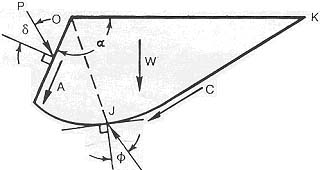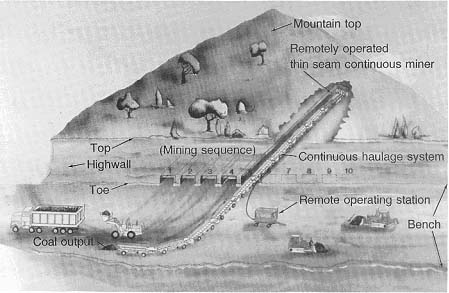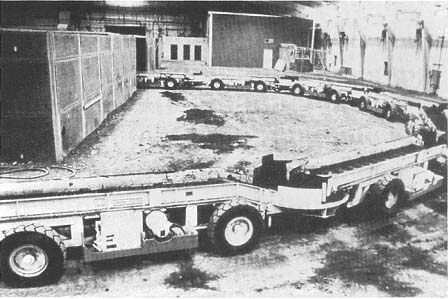
Mining Nonterrestrial Resources: Information Needs and Research Topics
Jaak J. K. Daemen*
The following research topics have been generated by my reading of the draft reports" Exploring, Evaluating, and Mining Nonterrestrial Resources," "To Build a Mine," "Asteroid Mining," and especially" A Baseline Lunar Mine." For a mining engineer like myself who is totally unfamiliar with nonterrestrial operations, this is a fascinating and stimulating opportunity to take an entirely different viewpoint on operations that usually seem humdrum and routine. Being forced to reevaluate the basics might be as productive for our mining on Earth as it is necessary for nonterrestrial operations.
This paper presents an outline of topics that we need to understand better in order to apply mining technology to a nonterrestrial environment. The proposed list is not intended to be complete. It aims to identify representative topics that suggest productive research. Such research will reduce the uncertainties associated with extrapolating from conventional earthbound practice to nonterrestrial applications. No attempt is made to rank the topics. One objective is to propose projects that should put future discussions of nonterrestrial mining on a firmer, less speculative basis.
I offer no details about the actual pursuit of the various research topics. Each one could be approached by a fairly standard method; e.g., starting with a comprehensive literature survey, identifying relevant technical specialties and authorities in the field, detailing research needs, initiating specific projects, reviewing progress, making theoretical analyses, eventually culminating in system designs and experimental trials. It would seem highly desirable to have close interaction between mining experts and space experts, so that no easily avoidable oversights are made in these studies.
I have not used a formal analysis of information needs to select research topics; I make my suggestions purely on the basis of professional judgment. An explicit investigation of information needs and of their relative significance within an overall nonterrestrial mining program would be a desirable step in initiating research. An alternative method of initiating and scoping research, which might take less time, is to present issues to a group that includes both mine equipment designers and operators and space equipment designers and operators.
The topics identified are inconsistent in terms of their depth and scope. Some have been included to illustrate broad areas that need review; others, to illustrate much more narrowly focused items. Although this inconsistent scale results in some overlap among topics, I think it is appropriate because it points out that there are uncertainties in need of resolution at many different levels of technical detail.
Williamson (1985) Aas suggested that lunar-based mining may become operational by about 2020, and Glaser (1983) has suggested that nonterrestrial resources may be used even earlier. Profound changes may be required in equipment and in modes of operation to fulfill these suggestions. Now is the time to at least start evaluating whether or not such changes will be needed.
This list of proposed research topics is assembled and discussed from a mining engineering point of view. It is aimed at identifying and clarifying some typical information needs and uncertainties that will require resolution in order to implement mining practices on the Moon or in other space environments. We must recognize that much of the proposed research could make a substantial contribution to future development of mining on Earth. This point deserves emphasis for two reasons: First, technology transfer to terrestrial applications is an explicit NASA mission (stated, for instance, by Firschein et al. 1986, appendix), mandated by Congress. And, second, if the mining industry clearly recognizes the potential benefits for its own future, it is far more likely to cooperate in productive research. The potential for such mutual benefits needs to be expressed directly and specifically. because such potential may not be self- evident to the industry. In fact, a more likely reaction is serious doubt as to whether such "exotic and far out" investigations have any bearing at all on conventional commercial practice. At some point in the future, it may be well to revisit the topic of nonterrestrial mining from a terrestrial technology transfer perspective, focusing on the benefits such a program might deliver to the state of the art of mining technology.
1. The influence of gravity on mechanical excavation technology and on the performance of associated equipment

Force System Used for Plastic Analysis of Soil Gathering by Bulldozer
The frictional (P) and adhesive (A) resisting forces, as well as the weight (W), depend on gravity. It is probable that the resisting forces are also influenced by operation in a vacuum.
From Hettiaratchi and Reece 1974, as
modified by Karafiath and Nowatzki 1978, p. 247.
Key:
A = the adhesive component of the resisting force; it acts along the surface
of the plane 01 where the soil ruptures
C = cohesive strength of the soil
P = the frictional component of the resisting force; it acts at angle 8 8 =
soil interface friction angle
F = the resultant of the normal and frictional forces (j> = angle of internal
friction
W = weight of the soil being dozed
OIJK = body of soil being pushed up and out
Gravity force components enter into the mechanics of most excavation and loading methods. The significance of gravity is likely to differ with the excavation method, particularly with the mode of operation and with the configuration of equipment. Because differences in gravity will be significant between non terrestrial and conventional earthbound excavation and loading, it would be desirable to evaluate the sensitivity of excavation and loading technologies to gravity. This comparative assessment should include such major performance aspects as power requirements, capacity, productivity, and breakout power. Classifying these aspects with respect to their sensitivity to gravity will 'provide insight into the relative performance of various systems under significantly different gravitational conditions. Such a classification will help identify preferred excavation methodologies for nonterrestrial applications. This assessment of the impact of gravity on excavation performance will also assist in identifying needed equipment design changes and in establishing correction factors for estimating production figures in a low-gravity environment.
2. The status of remotely controlled and automated mining

a. Computer-Based Remotely Controlled Highwall Mining System (HMS)

b. HMS Continuous Haulage Subsystem During Surface Evaluation
From Kwitowski et al. 1988.
*Department of Mining and Geological Engineering, University of Arizona, Tucson.